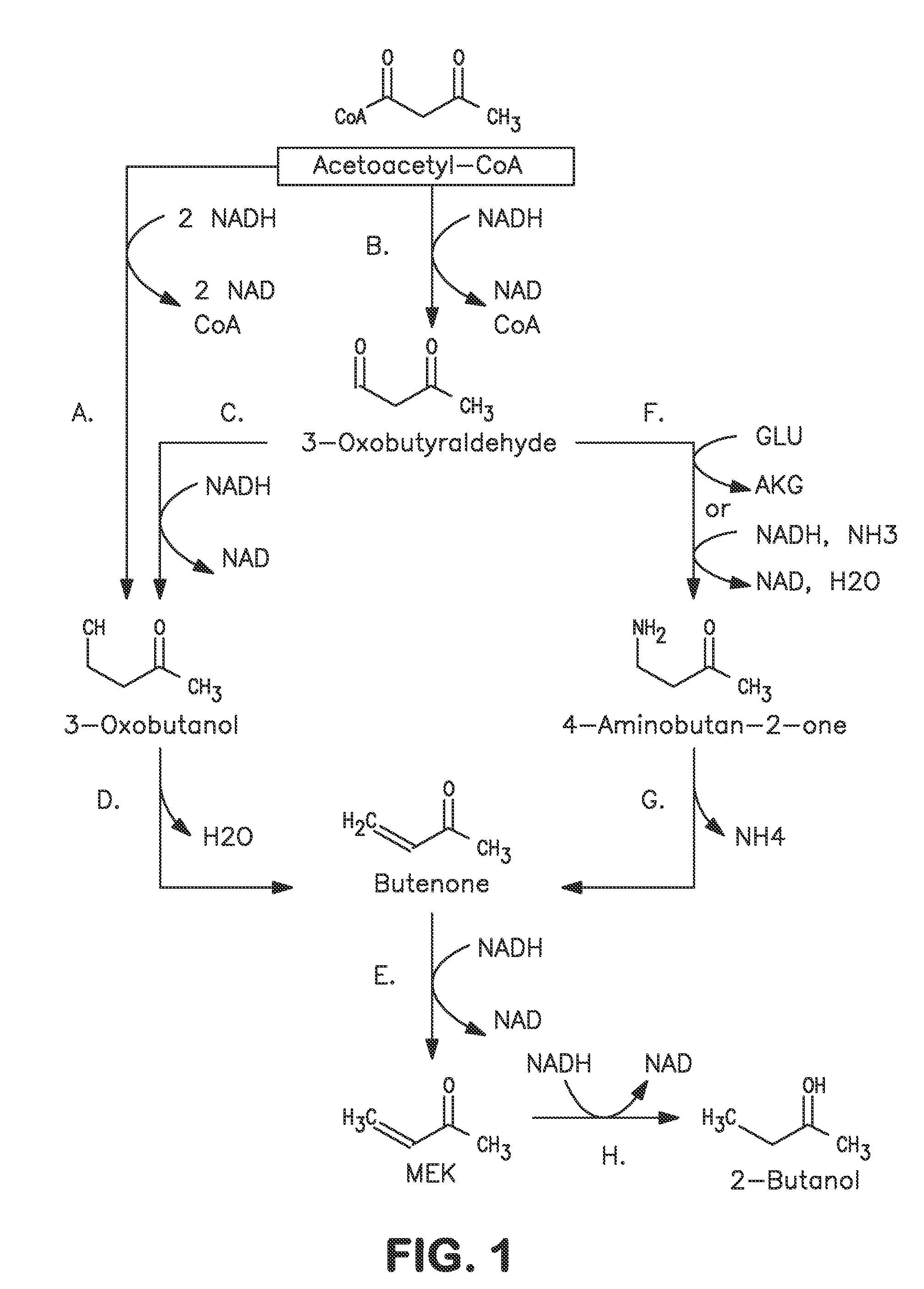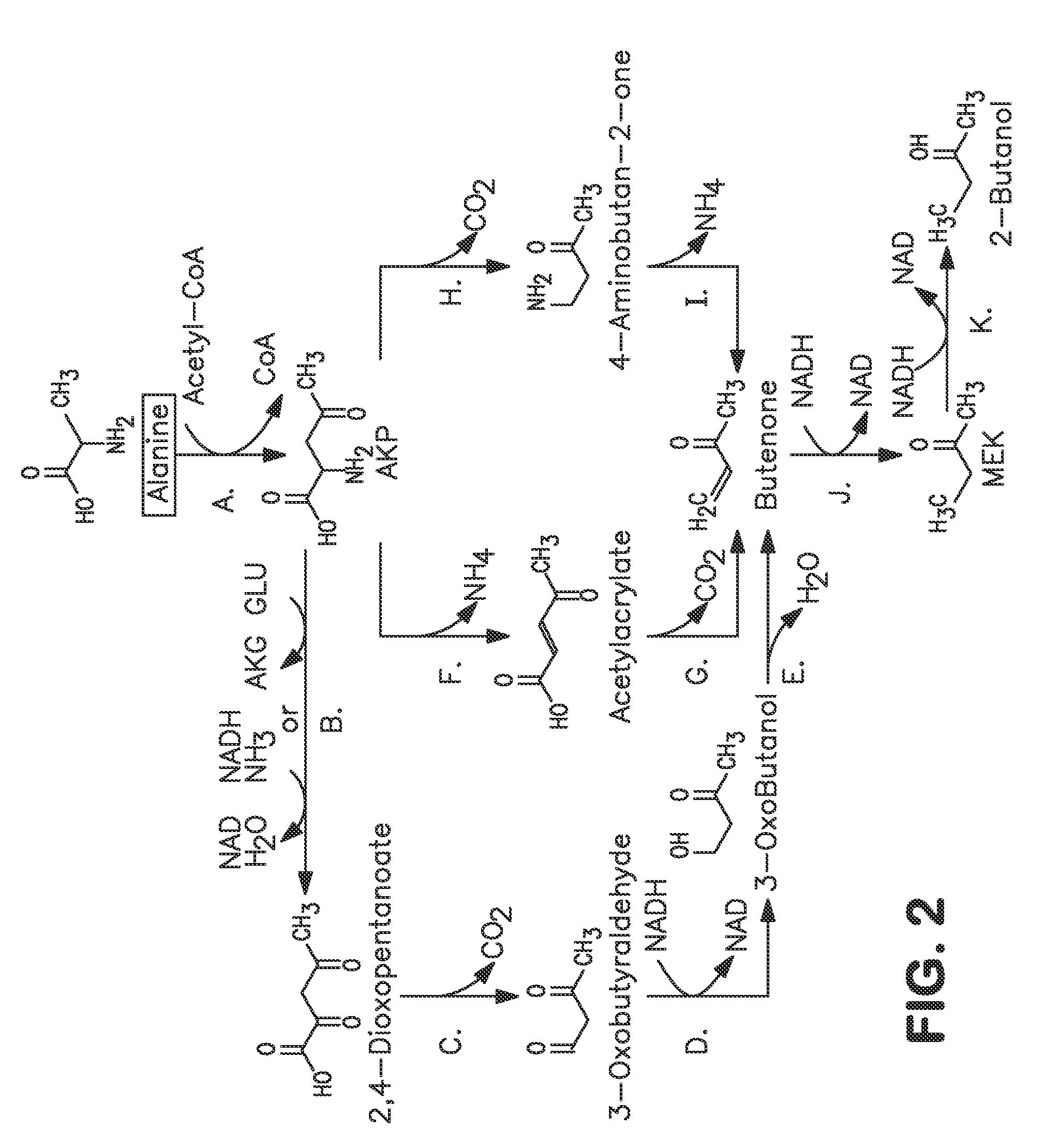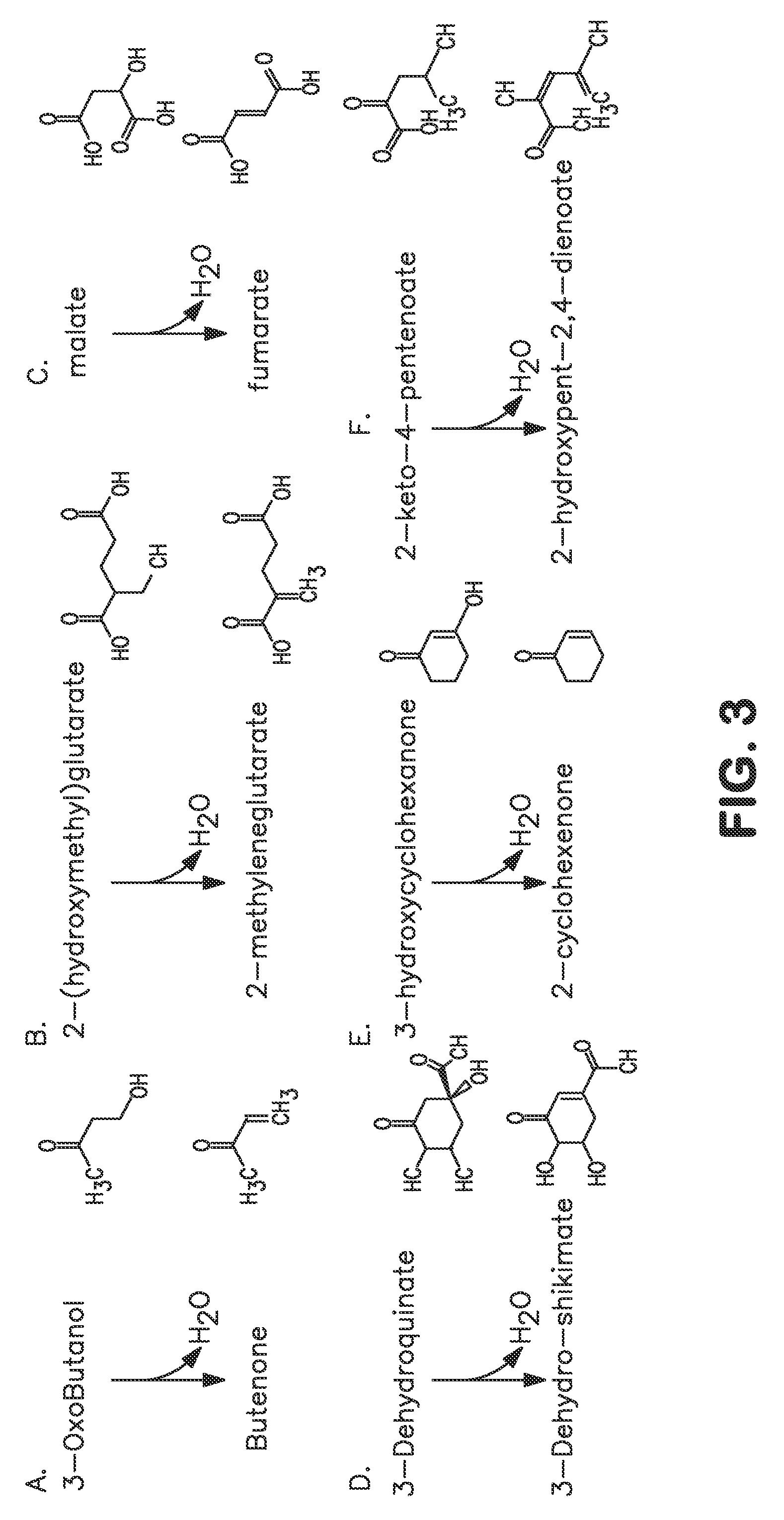Microorganisms and methods for carbon-efficient biosynthesis of MEK and 2-butanol
a biosynthesis and microorganism technology, applied in microorganisms, organic chemistry, microorganisms, etc., can solve the problems of high energy consumption, high cost of metals in the catalyzed process for the production of mek,
- Summary
- Abstract
- Description
- Claims
- Application Information
AI Technical Summary
Benefits of technology
Problems solved by technology
Method used
Image
Examples
example i
MEK Synthesis Using Acetoacetyl-CoA as the Intermediate
[0255]This Example describes the generation of a microbial organism capable of producing MEK using acetoacetyl-CoA as the precursor (Steps A, D and E in FIG. 1). Genes for the production of MEK are inserted into Escherichia coli.
[0256]Escherichia coli is used as a target organism to engineer the pathway in FIG. 1. E. coli provides a good host for generating a non-naturally occurring microorganism capable of producing MEK. E. coli is amenable to genetic manipulation and is known to be capable of producing various products, like ethanol, acetic acid, formic acid, lactic acid, and succinic acid, effectively under anaerobic or microaerobic conditions.
[0257]To generate an E. coli strain engineered to produce MEK, nucleic acids encoding the enzymes utilized in the disclosed pathway (Steps A, D and E) as described previously, are expressed in E. coli using well known molecular biology methods (Ausubel et al., Current Protocols in Mole...
example ii
MEK Synthesis Using Alanine as the Intermediate
[0262]This example describes the generation of a microbial organism capable of producing MEK using the alanine pathway in FIG. 2 via Steps A, B, C, D, E and J. Genes for the production of MEK are inserted into Escherichia coli.
[0263]Escherichia coli is used as a target organism to engineer a MEK-producing pathway as shown in FIG. 2. E. coli provides a good host for generating a non-naturally occurring microorganism capable of producing MEK. E. coli is amenable to genetic manipulation and is known to be capable of producing various products, like ethanol, acetic acid, formic acid, lactic acid, and succinic acid, effectively under anaerobic or microaerobic conditions.
[0264]To generate an E. coli strain engineered to produce MEK, nucleic acids encoding the enzymes utilized in the alanine pathway, as described previously, are expressed in E. coli using well known molecular biology methods (see, for example, (Ausubel et al., supra; Sambrook...
example iii
2-Butanol Synthesis Using Acetoacetyl-CoA as the Intermediate
[0269]This Example describes the generation of a microbial organism capable of producing 2-butanol using acetoacetyl-CoA as the precursor (Steps A, D and E in FIG. 1). Genes for the production of 2-butanol are inserted into Escherichia coli.
[0270]Escherichia coli is used as a target organism to engineer the pathway in FIG. 1. E. coli provides a good host for generating a non-naturally occurring microorganism capable of producing 2-butanol. E. coli is amenable to genetic manipulation and is known to be capable of producing various products, like ethanol, acetic acid, formic acid, lactic acid, and succinic acid, effectively under anaerobic or microaerobic conditions.
[0271]To generate an E. coli strain engineered to produce 2-butanol, nucleic acids encoding the enzymes utilized in the disclosed pathway (Steps A, D and E) as described previously, are expressed in E. coli using well known molecular biology methods (Ausubel et ...
PUM
| Property | Measurement | Unit |
|---|---|---|
| mass | aaaaa | aaaaa |
| wavelength | aaaaa | aaaaa |
| wavelength | aaaaa | aaaaa |
Abstract
Description
Claims
Application Information
 Login to View More
Login to View More - R&D
- Intellectual Property
- Life Sciences
- Materials
- Tech Scout
- Unparalleled Data Quality
- Higher Quality Content
- 60% Fewer Hallucinations
Browse by: Latest US Patents, China's latest patents, Technical Efficacy Thesaurus, Application Domain, Technology Topic, Popular Technical Reports.
© 2025 PatSnap. All rights reserved.Legal|Privacy policy|Modern Slavery Act Transparency Statement|Sitemap|About US| Contact US: help@patsnap.com



